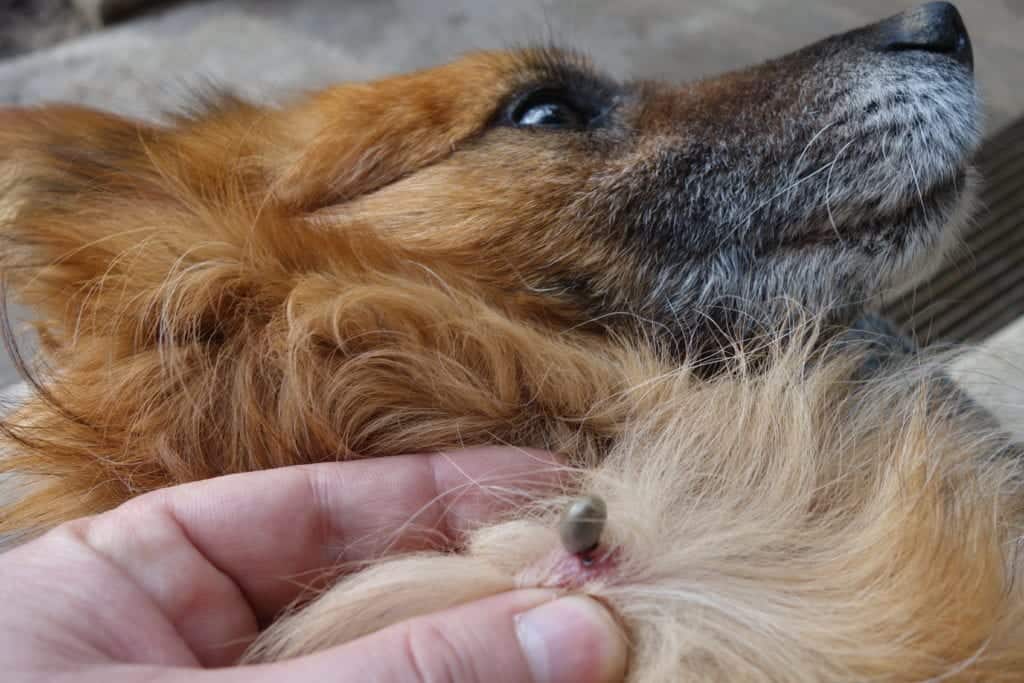Health Concerns of Pests – Part 6
Health Concerns of Pests – Part 6
This Health Concerns Post Series breaks down some of the most common pests and the various medical issues they can cause. In this blog, we breakdown some health-based conversations about pests including: pests & coronavirus, pests & pets, and pests in prehistory.
Pests & Coronavirus
Vector pests such as mice, rats, cockroaches, fleas, ticks, and, most notoriously, mosquitos; both carry and transmit a variety of diseases, causing hundreds of thousands of deaths per year. As such, their potential links to COVID-19 were of particular concern when the virus first broke out. Thankfully, the World Health Organization has gone on record stating that there are no reported cases of such instances, nor evidence of any kind that suggests that the virus can be transmitted through the bites of mosquitos. Furthermore, Jim Fredericks, Ph.D., chief entomologist for the National Pest Management Association, confirms this notion, stating, “there is currently no evidence to suggest that pests like mosquitoes and ticks can be implicated in the transmission of COVID-19.” Similarly, the Center for Disease Control and Prevention (CDC) addressed concerns regarding rodents as vectors of the disease, announcing that, “at this time, there is no evidence that animals play a significant role in spreading the virus that causes COVID-19, [and] the risk of animals spreading COVID-19 to people is considered to be low.” So, while vector pests may not transmit COVID-19 specifically, they still can put us at risk of catching various, serious diseases. From malaria to even the bubonic plague, pests can get your extremely sick, and in the midst of a pandemic, it is more important than ever to safeguard your immune system. Contracting COVID-19 while your immune system is already compromised by another disease increases your chances of having a severe case of either ailment. Keeping potential pest infestations at bay is vital for staying safe in these unsettling times. 
Pests & Pets
Unfortunately, pests don’t just bother us, they can bug our furry friends as well. In particular, dogs and cats tend to be targeted by the same pests that bite us. Fleas are the most infamous of these pests, and pets are actually often the reason behind flea infestations in homes. Fleas love to feast on the blood of our beloved furry friends. They are nasty external parasites that inject their saliva into the dermis of their victims with each bite. Unfortunately, this can cause health problems for both dogs and cats including flea allergy dermatitis (FAD) or even anemia, which can unfortunately lead to death in severe cases. Similarly, ticks can transmit terrible diseases to Fluffy or Fido such as Lyme disease or tick paralysis if the tick is left feeding undisturbed for long enough. While some pests bother our pets… others can actually be pets themselves. The least surprising of these pest-y pests are mice and rats, who have been a staple of pet stores for decades. When domesticated, rodents are a far cry from their dangerous, wild counterparts. Cute, cuddly, friendly, and even sometimes very smart in the case of rats, these furry little creatures can make amazing companions. While they may be amazing companions, occasionally, they can also contract diseases that can be passed to their loving owners. Thankfully, regular visits to the veterinarian and proper care of your rodents can help prevent these health risks. 
Pests in Prehistory
Insects existed in troves in prehistoric times. In fact, some of these creatures thrived as massive versions of today’s miniscule pests. For example, the Meganeura Dragonfly with a wingspan of 2 feet (65cm) were the size of hawks and had a predatory nature, swopping down to capture and devour prey. Others, while smaller, thrived in other ways. After 15 years of analyzing the DNA of 34 bed bug species collected from 62 different locations, a team of researchers managed to confirm that bed bugs have existed for over 100 million years. As such, it appears as though bed bugs may have originally feasted on dinosaur blood for sustenance. Similarly, two ancestors of the modern cockroach, the Mulleriblattina bowangi and the Crenocticola svadba, were discovered to have been alive during the Cretaceous Period spanning 66 to 145 million years ago. Their remains, discovered preserved in amber in a cave in the Hukawng Valley in Myanmar, between China and India, revealed this shocking information when the specimens were carbon dated over 99 million years. Much like in Michael Crichton’s fictional story, Jurassic Park, prehistoric mosquitos have actually been discovered preserved in substances such as amber. Entomologist spouses Roberta and George Poinar happened to collect samples of such amber drops containing insects and various species of flora dating back hundreds of thousands, and even millions, of years. With a series of tests, they managed to extract preserved contents within the gut of two of the amber-preserved insects, which, when analyzed revealed data regarding health risks of dinosaurs in their day. The first bug contained a pathogen that causes a parasitic disease known as leishmania(a reptilian disease) while the second specimen contained pathogens that cause malaria – arguably the most infamous mosquito-borne disease today. The use of these preserved insects, along with a series of other evidence collected from fossilized dinosaur excrements and plants of the time period, the Poinars theorize that the insect-transmitted pathogens could have actually been the leading catalysts for the eventual extinction of dinosaurs. Insects and dinosaurs were, as the Poinars stated in their 2008 book on the subject, “locked in a life-or-death struggle.” As we currently face insects day to day and require pest control services, and not velociraptor control services, it’s clear that, whether they were the cause or not, insects won. 
Citations
11 Bugs to Watch Out For If You Have Pets (2017) American Pest. Available at: https://www.americanpest.net/blog/post/11-bugs-to-watch-out-for-if-you-have-pets (Accessed: September 2020). Antani, K. and Burgeson, A. (2011) Blattella Germanica: German Cockroach, Animal Diversity Web. The University of Michigan. Available at: https://animaldiversity.org/accounts/Blattella_germanica/ (Accessed: August 2020). Coronavirus Disease (COVID-19) Advice for the Public (2020) The World Health Organization (WHO). Available at: https://www.who.int/emergencies/diseases/novel-coronavirus-2019/advice-for-public/myth-busters (Accessed: September 2020). COVID-19 and Animals (2020) Centers for Disease Control and Prevention. The U.S. Department of Health and Human Services. Available at: https://www.cdc.gov/coronavirus/2019-ncov/daily-life-coping/animals.html (Accessed: September 2020). Diseases Directly Transmitted by Rodents (2017) Centers for Disease Control and Prevention. The National Center for Emerging and Zoonotic Infectious Diseases & The Division of High-Consequence Pathogens and Pathology. Available at: https://www.cdc.gov/rodents/diseases/direct.html (Accessed: March 2020). Do Mosquitoes and Ticks Transmit COVID-19? (2020) Pest World. The National Pest Management Association. Available at: https://www.pestworld.org/news-hub/press-releases/do-mosquitoes-and-ticks-transmit-covid-19-experts-say-no/ (Accessed: September 2020). Dr. Nicholas, J. (2019) How to Remove a Tick from Your Dog or Cat – What to Do and What NOT to Do, Preventive Vet. Available at: https://www.preventivevet.com/dogs/how-to-remove-a-tick-from-your-dog-or-cat (Accessed: June 2020). Fleas (1997) WHO. The Department of Vector Control. Available at: https://www.who.int/docstore/water_sanitation_health/vectcontrol/ch24.htm (Accessed: September 2020). The Hidden Dangers of Flea Bites: What to Look For (no date) The Associated Press. Seresto. Available at: https://apnews.com/sponsored/?prx_t=z40EAq48yAniAPA&prx_ro=s&ntv_fpc=671dc30c-79c6-4e77-b41f-040c722e9642&ntv_fr (Accessed: September 2020). Hill, C. and MacDonald, J. (2008) Fleas, Purdue University . Purdue’s College of Agriculture: Entomology Department. Available at: https://extension.entm.purdue.edu/publichealth/insects/flea.html (Accessed: September 2020). Hughes, V. (2008) Did the Dinosaurs Bug Out?, The Smithsonian Magazine. The Smithsonian Institute. Available at: https://www.smithsonianmag.com/science-nature/did-the-dinosaurs-bug-out-180940839/ (Accessed: October 2020). Human Coronavirus Types (2020) Centers for Disease Control and Prevention. The National Center for Immunization and Respiratory Diseases. Available at: https://www.cdc.gov/coronavirus/types.html (Accessed: September 2020). Naming the Coronavirus Disease (COVID-19) and the Virus that Causes It (2020) The World Health Organization (WHO). Available at: https://www.who.int/emergencies/diseases/novel-coronavirus-2019/technical-guidance/naming-the-coronavirus-disease-(covid-2019)-and-the-virus-that-causes-it (Accessed: September 2020). Parada, J. Ph.D. (2020) Is Coronavirus Transmitted by Pests?, Pest World. The National Pest Management Association. Available at: https://www.pestworld.org/news-hub/pest-health-hub/is-coronavirus-transmitted-by-pests/ (Accessed: September 2020). Parasites – Leishmaniasis (2020) Centers for Disease Control and Prevention. The United States Department of Health & Human Services. Available at: https://www.cdc.gov/parasites/leishmaniasis/index.html (Accessed: October 2020). Poinar, R. and Poinar, G. (2008) What Bugged the Dinosaurs? – Insects Disease, and Death in the Cretaceous. Princeton University Press. Ticks and Tick Removal (2018) International Cat Care. Available at: https://icatcare.org/adive/ticks-and-tick-removal/(Accessed: June 2020). Why Aren’t There Giant Insects? (2012) SciShow. Available at: https://www.youtube.com/watch?v=179FuGuk1qE&list=PLB3FCEEAC84884760&index=50 (Accessed: May 2020). Willson, J. (2019) Rats & Mice As Pets, Pets on Mom. Available at: https://animals.mom.com/rats-mice-pets-1429.html (Accessed: October 26, 2020). Wu, K. (2020) Oldest Known Cave-Dwellers Are 99-Million-Year-Old Cockroaches, The Smithsonian Magazine. SmartNews. Available at: https://www.smithsonianmag.com/smart-news/99-million-year-old-cockroaches-are-oldest-known-cave-dwellers-180974284/ (Accessed: June 2020).
Request a Free Quote Today
(We do not share your data with anybody, and only use it for its intended purpose)


